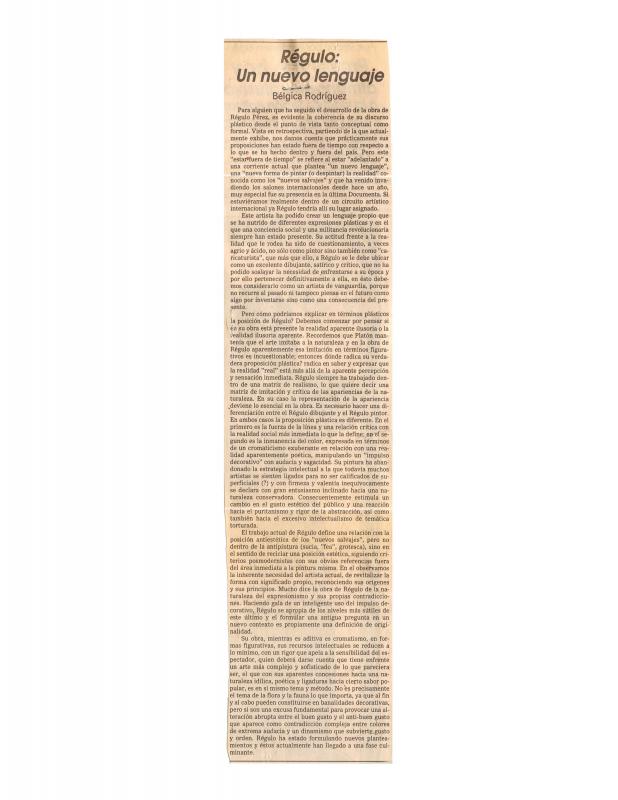The Venezuelan poet and art historian Rafael Pineda (b. 1926) considers the work of Régulo Pérez (b. 1929) in light of the exhibition held at the Galería Acquavella, in Caracas, under the title Flores y pájaros, montañas y ríos (1981). This short essay provides a formal and conceptual reading of the works shown in this exhibition, emphasizing themes such as flora, fauna, and landscape, all situated in a social milieu. It is this context that turns the artist’s message into an alert on environmental extinction as well as a denunciation of the society. In a certain sense, Pineda provides an overview of the “evolution” of Régulo’s art process. In the course of this essay, the writer observes two constant aspects: the artist’s need to communicate, and most importantly, his ties to both the urban and the natural world.
This Pineda article makes an important contribution, since the canvases shown in this exhibition mark a differentiation from Régulo’s [earlier] experimental work. The explosion of spot color and of expressively delineated figures are a far cry from the muted, shaded colors that can be observed in his earlier works.
In addition, given the lack of any in-depth study on this artist, Pineda’s perspective, along with that of other writers such as Juan Calzadilla, is a key representative study of the most creative periods of this artist. [Regarding Calzadilla, see “Régulo Pérez. El compromiso con la realidad,” in El ojo que pasa: crónicas sobre la creatividad (Caracas: Monte Ávila Editores, 1969), p. 61)]
The writer provides another reading of the artist’s themes in “Régulo y el eje Orinoco–Pintura” [see ICAA digital archive doc. no. 1154220].
Regarding the work of Régulo Pérez, see the texts by Víctor Guédez, “La protesta vehemente y el sentimiento lírico en Régulo Pérez” (doc. no. 1154204), Bélgica Rodríguez, “Un nuevo lenguaje” (doc. no. 1157776), and Roberto Guevara, “Régulo y la cultura visual” (doc. no. 1157759).




